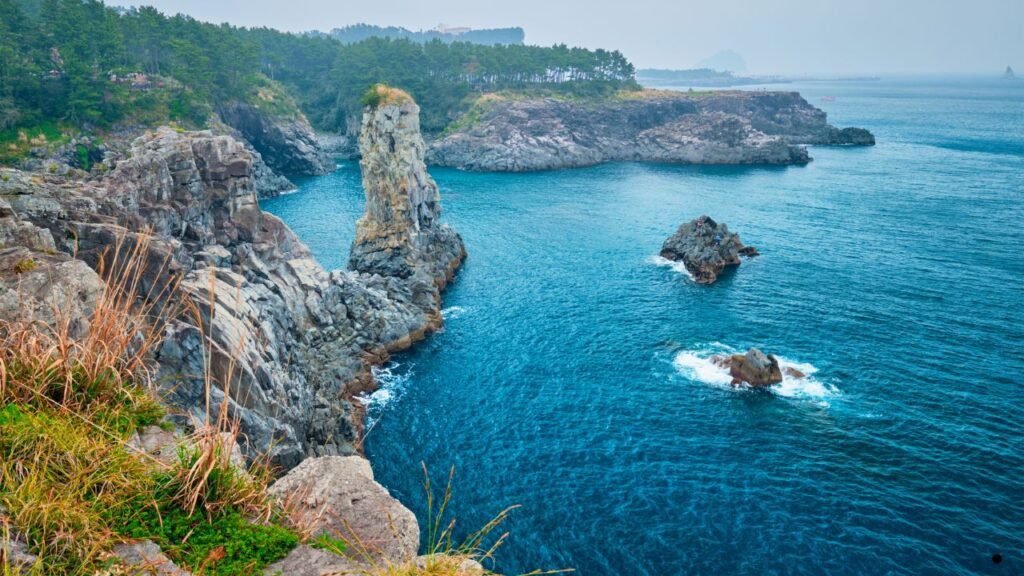South Sentinel Island ,Nestled within the breathtaking Andaman and Nicobar Islands stands as one of the world’s last untouched habitats. This small, uninhabited landmass, shrouded by dense tropical forests and encircled by spectacular coral reefs, showcases nature’s incredible ability to thrive without human interference. Unlike nearby North Sentinel Island, known for its indigenous people, South Sentinel Island remains undisturbed by civilization, making it an ecological jewel of immense scientific and environmental importance.
This article will uncover the island’s geography, its rich biodiversity, and the vital conservation efforts necessary to protect this natural haven. We’ll also explore why its preservation matters not just for the island itself, but for our planet. With the growing threats posed by climate change impacts, now is the time to appreciate and safeguard the incredible beauty and ecological harmony of South Sentinel Island.
Geography of South Sentinel Island
The Island’s Scenic Isolation
Tucked deep in the Bay of Bengal, South Sentinel Island is part of the sprawling archipelago of the Andaman and Nicobar Islands. It spans a mere 1.6 square kilometers, yet its ecological and geographical significance far outweigh its size. The island’s remoteness is central to its pristine condition. Strong currents, combined with the lack of navigational access, create a barrier that keeps it untouched by human activity.
The island is blanketed by a dense, evergreen forest that thrives despite the challenging saline air and sandy soil. Surrounding the landmass, a vibrant ring of coral reefs quietly protects it from erosion and serves as a crucial habitat for marine life. The flat terrain, humid tropics, and lush vegetation come together to complete the portrait of a tropical wilderness unspoiled by modernity.
South Sentinel’s natural seclusion has preserved its ecosystems in a way that few places on Earth can rival. It’s a vivid reminder of what our planet might have looked like before urban sprawl began reshaping its landscapes.
Table of Geographical Features of South Sentinel Island
| Feature | Description |
| Size | Approximately 1.6 square kilometers. |
| Location | Bay of Bengal, part of Andaman & Nicobar Islands. |
| Vegetation | Dense tropical forests adapted to saline air and sandy soil. |
| Surrounding Waters | Enclosed by coral reefs forming turquoise lagoons. |
| Accessibility | Extremely remote, strong ocean currents and no navigational infrastructure. |
| Terrain | Flat with no freshwater sources, yet rich vegetation. |
| Climate | Tropical, with high humidity and occasional monsoon influence. |
The Biodiversity of South Sentinel Island

The ecosystems of South Sentinel Island, both on land and beneath its turquoise waters, brim with vibrant life. The coral reefs are undoubtedly one of the crown jewels of its biodiversity. These reefs host countless species, including brightly colored parrotfish, clownfish hiding in anemones, lurking moray eels, majestic groupers, and even predatory reef sharks. Coral ecosystems like these not only sustain marine populations but play an essential role in regulating carbon levels in the atmosphere.
On land, though small in size, the island overflows with native plants perfectly adapted to the nutrient-scarce soil. While you won’t find large mammals here due to the island’s limited space, the forest shelters a stunning array of small reptiles, birds, and insects that altogether create a balanced, intricately woven ecosystem.
The waters and forests of South Sentinel Island stand as a testament to the resilience of life. Even in the complete absence of human control, species flourish, coexisting harmoniously in an environment untouched by industrialization or urban development. This biodiversity, in turn, contributes significantly to the global tapestry of life, showcasing how isolated ecosystems evolve.
Ecological Significance of South Sentinel Island
South Sentinel Island holds profound ecological importance. Its coral reefs act as natural shields, guarding against the rising sea levels that threaten coastlines around the globe. These thriving underwater forests help stabilize marine environments while indirectly protecting coastal communities by absorbing ocean wave energy.
For scientists, the island offers an unparalleled glimpse into what ecosystems look like when left fully intact. Untouched by invasive species or human activity, South Sentinel Island serves as a living laboratory where researchers can study natural ecosystems and their responses to environmental change.
One can’t ignore the looming specter of climate change impacts, which puts even this remote island in danger. Its plight underscores the urgent need for humans to adopt sustainable practices to ensure the survival of irreplaceable environments like this one.
Conservation Efforts to Protect South Sentinel Island
Shielding Nature’s Masterpiece
South Sentinel Island benefits from stringent protection measures enforced by the Indian government. The entire Andaman and Nicobar Islands region is classified as sensitive to ecological disruption, with South Sentinel designated as a no-activity zone. Human activities like fishing, tourism, or construction are strictly prohibited here to avoid any disruption to its fragile environments.
However, conservation doesn’t stop at laws and patrolling. Environmental organizations constantly monitor reef health and track early signs of issues like coral bleaching. These efforts are critical, especially as rising ocean temperatures threaten the delicate balance of the marine ecosystem.
Marine biodiversity projects are being considered, including coral reef farming and technologies that aim to restore damaged parts of the underwater ecosystem. While these initiatives foster hope, global cooperation is vital to truly safeguard isolated paradises like South Sentinel Island before climate change advances further.
What Makes South Sentinel Island Unique?
What sets South Sentinel Island apart is its ability to transport us to a time when nature dominated the planet without human intervention. Unlike more accessible parts of the Andaman and Nicobar Islands, which have been affected by tourism or development, South Sentinel Island represents a time capsule. Its forests remain uncut, its waters are teeming with marine life, and its reefs stand vibrant and alive in an era of environmental degradation.
Perhaps the island’s most fascinating feature is the unbroken relationship between its coral reefs and the rest of its ecosystem. Serving as both guardians against erosion and nurseries for young fish, the reefs work in tandem with the island’s forested interior to create a balanced environment. This interconnectedness offers lessons about ecological dependence that conservationists and scientists alike must learn from.
The almost mythical allure of South Sentinel Island isn’t just its beauty but its very existence as an unspoiled slice of the natural world. Preserving it means preserving a fragment of Earth that hasn’t yet been altered.
Why Preserving South Sentinel Island Is Crucial
Preserving South Sentinel Island isn’t merely about protecting an isolated landmass. It’s a commitment to safeguarding some of the last remaining untouched corners of our planet. The island symbolizes what the Earth once was and could still be if we learn to coexist more harmoniously with nature.
Conservation of the island contributes directly to:
- Protecting endangered species reliant on these ecosystems.
- Providing scientists with a pristine environment to study biodiversity and climate change resilience.
- Acting as a critical symbol in global discussions about environmental preservation.
The lessons South Sentinel Island offers are invaluable, but they’ll mean nothing without deliberate action. Its coral reefs, greenery, and wildlife are all integral to combating broader environmental challenges like ocean acidification and carbon imbalance.
The Future of South Sentinel Island
Navigating the Challenges Ahead
While the island currently thrives in its untouched state, its future is not immune to global threats. Climate change poses significant risks, notably rising sea levels that could erode both the island itself and the coral reefs essential to its marine biodiversity. Ocean warming also triggers coral bleaching, which could cause long-term damage to these vibrant ecosystems.
To combat these challenges, global collaboration is essential. Coral restoration technologies, supported by reductions in greenhouse gas emissions worldwide, are key to ensuring South Sentinel Island survives as the paradise it is today. Raising awareness about the island’s ecological importance is equally vital, as it creates urgency for supportive international policies.
A Legacy of Untamed Beauty
South Sentinel Island is more than a geographical location; it is a reflection of the raw, untapped power of nature. Its vibrant ecosystems, rich biodiversity, and unspoiled beauty make it an irreplaceable part of Earth’s natural heritage.
Final Thoughts
Preserving South Sentinel Island means much more than protecting one small place. It embodies our broader responsibility to protect the planet and remind ourselves of the incredible balance that ecosystems achieve when left alone. This stunning paradise urges us to act decisively, not only for its preservation but for the countless ecosystems that depend on our stewardship. By taking the lessons from this untouched wilderness, we can secure a better and more sustainable future for all.
Read our other articles: Tumbad: The Forbidden Treasure and its Terrifying Price
Thanks for visiting Globalexpressinfo.com. Don’t forget to share it on Twitter.






